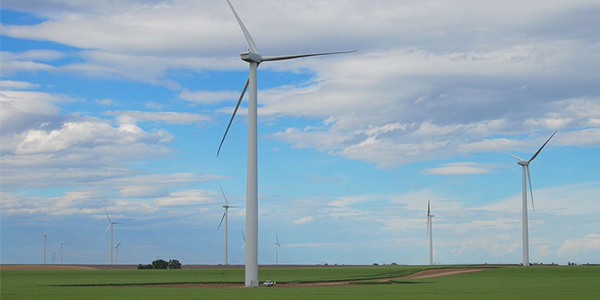Tri-State Generation and Transmission Association continues to emphasize its environmental bona fides, but on its own terms.
The Colorado-based cooperative filed its first electric resource plan (ERP) with the Colorado Public Utilities Commission on Nov. 30, building on the Responsible Energy Plan it unveiled last year. (See Tri-State to Retire 2 Coal Plants, Mine.)
The 20-year, $21.3 billion plan would reduce Tri-State’s CO2 emissions by 80% from 2005 levels by 2030 (20A-0528E). The plan’s preferred scenario would add more than 1.8 GW of renewable capacity by 2030 — more than doubling Tri-State’s currently contracted solar and wind resources — and 225 MW of standalone battery storage.
“We do not have to commit to a path at this time,” CEO Duane Highley said in a statement. “There will be time for emerging technologies to become competitive before we have to make acquisition decisions.”
At the same time, Tri-State pushed back against a recent preliminary order by the Colorado’s Air Quality Control Commission (AQCC) directing three coal-fired power plants, including Tri-State’s Craig Station, to close by the end of 2028, two years earlier than the cooperative planned.
Highley said Tri-State had “responsibly” set a voluntarily retirement date for Craig Station by the end of 2029, when it intends to have added 2 GW of renewable resources.
“It must be noted that Tri-State, the other utilities and the state’s professional staff all testified that accelerated plant closures were unnecessary to achieve visibility goals and exceed requirements to achieve reasonable progress toward achieving visibility improvements under the regulations,” he said. “The [AQCC’s] unprecedented preliminary final action to require the early closure of Craig Station rejected the recommendation of the state’s professional staff.”
The agency issued the order under the Clean Air Act’s Regional Haze Rule and to meet the state’s greenhouse-reduction targets (26% reduction over a 2005 baseline by 2025, 50% by 2030 and 90% by 2050). The AQCC will make a final decision during its Dec. 16-18 meetings.
Closing Craig and a second coal plant by 2030, as Tri-State announced in January, would cut more than 1.1 GW of coal-fired generation out of its fuel mix. Some Colorado environmental groups have pointed out the cooperative will still draw 23% of its energy in the next decade from coal-fired resources elsewhere in its four-state footprint.
Under Tri-State’s preferred ERP scenario, renewables will account for 59% of its generation mix by 2030. That amount of renewables will require the company participate in a Western RTO, Highley said. The company is among several Western entities evaluating membership in Western Utilities Eye RTO Membership in SPP.)
“One of the great attributes of SPP is its reach across 14, 15 states. [It’s] been able to integrate more renewables in a bigger way than thought possible,” Highley said during a virtual press conference last month alongside Colorado Gov. Jared Polis. It was the second time this year he has joined forces with the Democratic governor to highlight Tri-State’s effort in meeting the state’s greenhouse gas emission-reduction targets.
“There are hours of getting 80% renewable service [in SPP]. We’re going to need that same coordination as we build out our renewables,” Highley said, pointing to SPP’s presence in both the West and East. “There’s a better market in the West if we can get [renewable energy] across that border between the Eastern and Western grids. SPP is in a better situation to manage that.”




